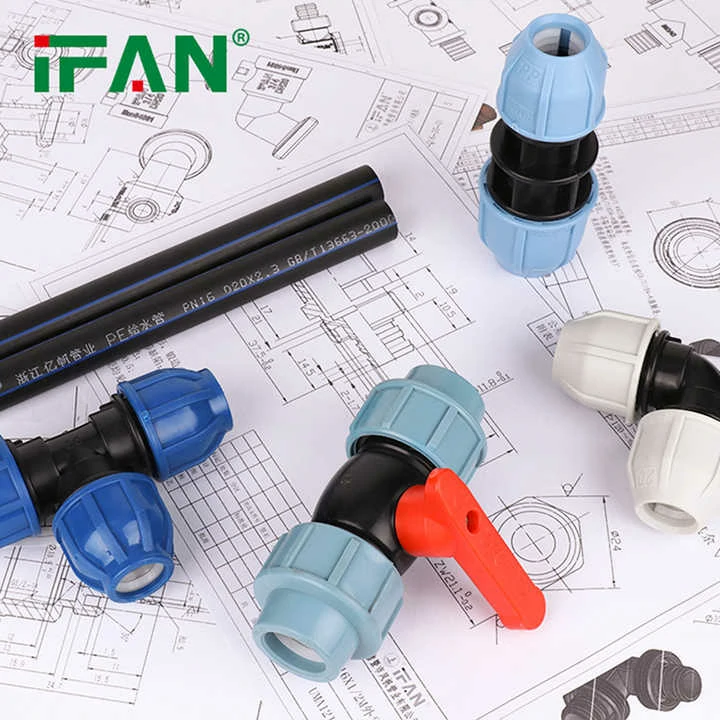Introduction to PP Compression Fittings
PP compression fittings are used in piping systems. They are made of polypropylene. They aim to create tight connections. For example, in small water supply lines.
Understanding Polyethylene Pipes
Polyethylene pipes are flexible and durable. They are used in various applications. They are common in irrigation systems.
Compatibility Considerations
Using PP compression fittings on polyethylene can be tricky. The materials have different properties. You need to consider chemical compatibility.

Physical Fit
The physical fit is extremely important. PP fittings, due to their specific manufacturing standards, might not fit perfectly onto polyethylene pipes. Their inner and outer diameters could mismatch. This mismatch in sizes can create gaps between the fitting and the pipe, which can lead to leaks. These leaks can then cause inefficiencies in the system, such as water loss or reduced performance, and might even require costly repairs or replacements.
Pressure Handling
PP compression fittings have certain pressure limits. Polyethylene pipes also have their own. The combination must handle the system’s pressure.
Temperature Resistance
Both materials react differently to temperature changes. PP fittings, made of polypropylene, and polyethylene pipes have distinct thermal expansion coefficients. As the temperature rises or falls, PP fittings and polyethylene might expand or contract at different rates. This disparity in expansion can lead to loosening or stress on the connection, thereby affecting their connection and potentially causing leaks or weakening the integrity of the piping system.
Sealing Issues
Sealing is crucial. PP compression fittings may not seal well on polyethylene. Leaks could occur. This can cause water loss.
Expert Recommendations
Experts recommend caution when attempting to combine different materials. It is advisable to first conduct tests on the combination of PP compression fitting and polyethylene. You could apply a small amount of pressure and observe the performance. Alternatively, it is a much safer option to use fittings that are specifically designed for polyethylene. By doing so, you can ensure the reliability and safety of the entire piping system, minimizing the risk of leaks and other potential issues.

